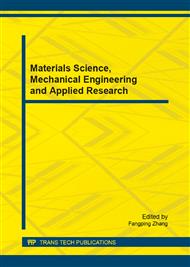p.127
p.133
p.137
p.142
p.146
p.152
p.157
p.163
p.167
On Stress Conditions Producing Crack-Free Matrix Metal-Brittle Inclusion Interface inside Heavy Forgings
Abstract:
Cracks at the boundary of the brittle inclusions inside heavy forgings are major defects detrimental to the forgings’ the fatigue life and impact performance. In the forging process, the stress field around brittle inclusions is the key factor determining whether cracks appear at the boundary. To study the influences of the stress field on the crack initiation, a definition of the Average Stress Intensity (ASI) and its mathematical expression analytic are given. Average Spherical Stress Intensity (ASSI) is used as an index to investigate the rule of the stress field’s influence on the brittle inclusion boundary crack initiation. Numerical simulation results indicate that ASSI is highly relevant to crack initiation at brittle inclusion boundary and it is practical to use it as a parameter to represent the effect of the stress field on the crack initiation at the boundary of the brittle inclusion. As the algebraic value of the ASSI decreases, the crack size decreases. When the algebraic value of the ASSI is less than-2.3, there will have no cracks at the boundary of the brittle inclusion. Hot compression tests at 1220°C are conducted on a Gleeble-3180 thermal mechanical simulator with dedicated specimens and shape anvils. Scanning Electron Microscopy (SEM) is employed to observe the cracks at the boundary of the brittle inclusions inside the specimens. Observed results agree well with the numerical simulation results.
Info:
Periodical:
Pages:
146-151
Citation:
Online since:
September 2014
Authors:
Price:
Сopyright:
© 2014 Trans Tech Publications Ltd. All Rights Reserved
Share:
Citation:


